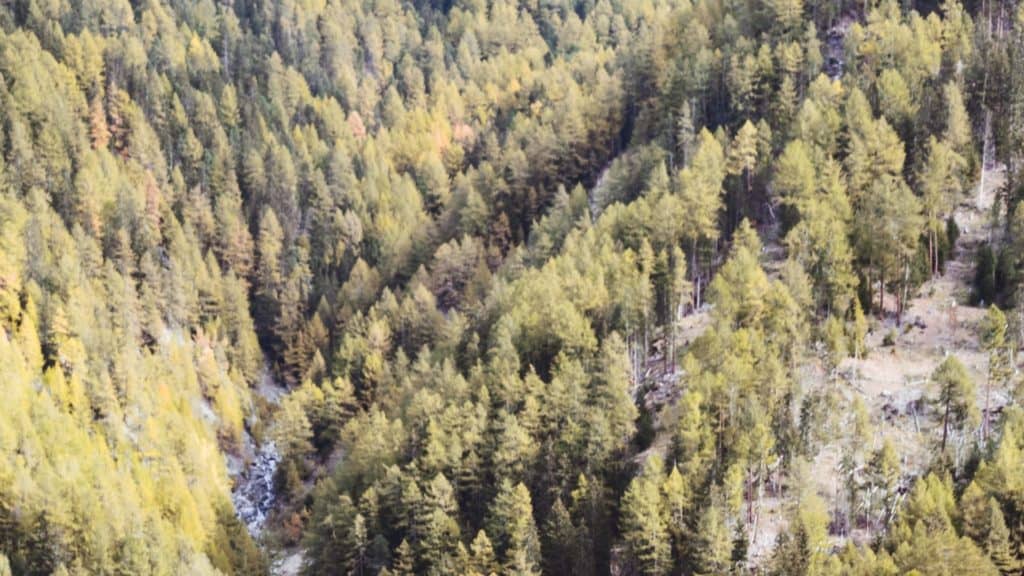March 21st is the International Day of Forests. We know that forests are crucial—they’re home to over 80% of land animals and plants, and cover 31% of the world’s total land area. About 1.6 billion people around the world depend on forests for their livelihoods and daily subsistence needs. But really, all of us depend on forests some way or another. To celebrate forests, we thought we’d curate a reading list all about them…
Earlier this month, we celebrated World Wildlife Day. Coincidentally, the theme this year was “Forests and Livelihoods: Sustaining People and Planet”, and so we came up with a few ways to celebrate World Wildlife Day, through forests. This time, we thought we’d build on that with a curated reading list, friendly for socially-distanced book clubs, or your own browsing to expand your mind.
Forests communicate, too
The Social Life of Forests, a viral essay by Ferris Jabr, published in the New York Times, explores how trees communicate and cooperate through subterranean networks of fungi, otherwise known as mycorrhizal networks. The essay details a meeting between Jabr and Suzanne Simard, a professor of forest ecology at the University of British Columbia, and elaborates in-depth about her groundbreaking and initially controversial work about forest communication. In the earlier days of her research, she “inadvertently provoked,” Jabr writes, “one of the oldest and most intense debates in biology: Is cooperation as central to evolution as competition?” Jabr revisits the skepticism around and hostility towards her work at the time, and situates her work among other research about forest communication.
Simard is a household name when we think about forest communication, but there are many other scientists studying this now. One of those is Merlin Sheldrake, who Robert Macfarlane, author of Underland: A Deep Time Journey, walks through a forest within this essay, The Understory, published in Emergence Magazine. The Understory explores more deeply the life beneath the forest floor and is worth a read if you’re interested in more of the technicalities, from a scientist’s perspective. And if you’re not?
Listen to how Sheldrake speaks about fungi and lichen, which “annihilate our categories of gender […] reshape our ideas of community and cooperation […] screw up our hereditary model of evolutionary descent […] [and] utterly liquidate our notions of time. Lichens can crumble rocks into dust with terrifying acids. Fungi can exude massively powerful enzymes outside their bodies that dissolve soil. They’re the biggest organisms in the world and among the oldest. They’re world-makers and world-breakers.”


IMAGE DESCRIPTION: TEXT ON A WHITE BACKGROUND, FEATURING A QUOTE FROM “THE UNDERSTORY” WHICH READS “POTAWATOMI, A NATIVE American language of the Great Plains region, includes the word puhpowee, which might be translated as “the force which causes mushrooms to push up from the earth overnight.” In “all its technical vocabulary,” Robin Wall Kimmerer notes, “Western science has no such term, no words to hold this mystery.””
Why is it that the scientific world took so long to learn to see this understory? Part of the reason is that, as Macfarlane writes, “orthodox ‘Western’ understandings of nature feel inadequate to the kinds of world-making that fungi perform.” What then? Leaning into Indigenous ways of knowing is one way to start, and for that, try Braiding Sweetgrass. Written by Indigenous ethnobotanist Robin Wall Kimmerer, it’s a book about the world of botany as described and explored through Native American traditions. You’ve probably heard about it before, and it’s not an easy read, but stick with it and you’ll find it’s worth it in the end.
The forest and me: alternative perspectives
Speaking of seeing forests through different lenses, read The Yosemite Fires: Settler Colonialism and Indigenous Wisdom, an essay by photojournalist, writer and influencer Aditi Mayer. In it, she looks at the past and present of Yosemite National Park. The Park, of course, was named by settlers—it was originally named Ahwahnee by the Indigenous people. Looking through the lens of Indigenous people, she argues, who have been erased by settler colonialism, will give us the key to figuring out how to manage fire or live with it.
The Indigenous communities in the Amazon have gained much more visibility in recent years, not least due to the fires that have been exacerbated by climate change. But it’s not just climate change, it’s corrupt, tyrannical governments too. The Amazon Is A Woman, an essay by Eliane Brum for Atmos, introduces the Indigenous women leaders who call the Amazon home. The Amazon—the most biodiverse region and the largest forest in the world—as you would probably know, is under attack. And the women are on the frontlines, defending the forests, not because they own the forests, as Brum articulates, but because “the forest owns them”.
One Hundred and Eleven Trees, an essay by Chelsea Steinauer-Scudder for Emergence Magazine, explores the relationship between women and forests too. In the essay, Steinauer-Scudder follows the people of a village in India, Piplantri. After a marble mine strips the village of its forests, the villagers start a tree-planting project, that reclaims an ancient relationship between the trees and women.
The trouble with rewilding…
Today, a popular solution to dwindling biodiversity in forests is rewilding. Rewilding is a comprehensive, often large-scale conservation effort. It essentially means to restore the wilderness, returning these lands to what they used to be. But as this 2016 essay by Irma Allen, titled The trouble with rewilding argues, rewilding is not as pure as it seems. Allen’s essay problematises the rewilding movement: its neo-Malthusian concerns and its choice of lands in which to advance rewilding initiatives. And if you think Allen’s concerns are outdated, you would be wrong.
Today, the conservation movement as a whole is still very much grappling with its whiteness. The movement is still largely white, as many have finally begun to notice, after the #BlackLivesMatter protests last year. Part of the reason is American environmentalism’s racist roots—for more on this, read about Sierra Club’s statement against, and grappling with, its white-supremacist history. (Sierra Club, for those unfamiliar, is one of the biggest and most influential environmental organisations in the US). Thankfully, the decolonising conservation movement is growing: check out this extra comprehensive 2019 reading list by Sara Cannon. It covers everything from land theft to green militarisation, from Indigenous knowledge systems to the perpetuation of colonialism and white supremacy in the conservation movement.
The year everything burned
We can’t talk about forests without acknowledging the way in which we were so conscious of forests in 2020 because of how much burning there was. So let’s recap. Not even ten days into 2020, the entire world knew about, thanks to the wall-to-wall coverage, Australia’s fires. Those fires changed our environmental consciousness entirely, what with the devastation of homes—human and non-human, and most especially of the Indigenous communities who were on the frontlines. In June, we saw zombie fires in the Arctic, named as such because of the way they survive underground during the winter and then reemerge the following spring. It was a sign of ongoing global warming, and of feedback loops that we won’t be able to stop.
Then in August and September, we saw wildfires tear across California and the rest of the world. That was when many began to feel overwhelmed with the climate crisis and tapped out. But it didn’t stop there—in October, a small landlocked country in South America, Paraguay, was on fire, a result of the nexus of government and corporate power, at the expense of Indigenous communities. What 2020 showed us was a preview of the ecological crisis to come and a reminder that the crisis is already here: just unevenly distributed.
How do we experience forests?
(Quick segue: being able to experience the forest is a privilege. As Elena Ríos, an Indigenous forest therapy guide shares, having access to nature is “an integral piece of our personal health, our community health, and global community health”. And yet, not all communities have equal access. For those of us who do, it’s important to think about how we can extend that privilege to underserved communities. And to think about why that privilege isn’t available to them, to begin with).
Ever heard of foraging? It’s the search for food in the wild, which is, of course, regularly practised by non-humans. But we humans too, can forage, and for some communities who have access to forests, foraging is a regular activity. Dr. Fushcia Hoover writes for Atmos, A Black Girl’s Guide To Foraging, which explores how the act of “parsing through and collecting what nature has to offer is as spiritual as it is resourceful—an act of resilience and a way to reclaim her roots.”
And on a related note, have a read of the classic The Mushroom at the End of the World, by Anna Lowenhaupt Tsing. In it, she talks about how unlikely foragers find themselves in destroyed forests, looking for matsutake, a highly-prized commodity, to be sold. The book is a wonderful exploration of what exists in the ravages of capitalism, and of course, of the elusive, funky mushroom, the matsutake.
Finally, check out Among the Trees, an essay by Carl Phillips for Emergence Magazine. An extended meditation “on the relationship between place and intimacy, the body and the word”, Phillips takes a walk through trees “to explore what can and cannot be known”. As much as we’d like to talk about forests, there are things we won’t know until we experience the forest for ourselves. Perhaps there aren’t words for these experiences, and perhaps there needn’t be.
How do you experience the forest? What will you read this year for the international day of forests?


